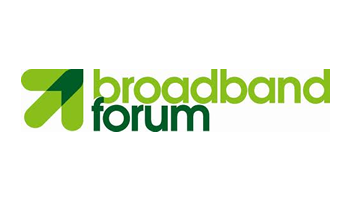G.Fast to be a Major Factor in European Union 2020 Vision for Broadband Penetration, Says Broadband Forum
One of the new technologies that will play a major role in helping service providers meet rising demand across their networks
G.fast is a technology that is yet to be fully realized by the industry, but is set to emerge as a major solution for service providers looking to meet European Union broadband penetration targets set out in the Europe 2020 strategy and Digital Agenda initiative. This was one of the key messages delivered today by Robin Mersh, CEO of the Broadband Forum, during a major presentation at the G.fast pre-conference focus day ahead of tomorrow’s Fixed Access Networks Summit in Berlin.
Mersh highlighted that G.fast is a global solution for hard-pressed service providers looking to meet the growing customer demand. G.fast will provide from 300 to 800 Mbps with fast, cost-effective deployment, a breakthrough in self-install capabilities due to a unique reverse-power feature, and even the option to use the technology for mobile backhaul.
“Those who think G.fast is just another DSL technology are way off the mark – G.fast is coming fast and it’s going to make an enormous difference for service providers and their customers,” he told his audience of telecoms operators, regulators and vendors. “G.fast is a giant step away from DSL, borrowing the best from ADSL and VDSL to create a new generation of technology that is lower in power, more efficient, faster and easier to install.”
Smaller equipment and self-install capabilities give operators a more cost- effective method of deploying FTTH-speeds to the subscriber’s home by deploying fiber up to the last 200m, from which the distribution point can then utilize G.fast to complete the final meters. This avoids the cost of sending a technician, the inefficiency of scheduling technicians, and the inconvenience to the customer of having a technician in their home.
“Customer self-install environment was included in the design of G.fast from the beginning and will therefore bring significant cost savings. Alternative technologies, such as VDSL2, were not designed from the start for a customer self-install, it was always assumed that the technician would install it.”
Mersh’s abstract comes as the Broadband Forum continues to develop its global G.fast testing program in order to meet market demand and Digital Agenda objectives, and enable interoperability. Testing is already under development and includes functional, interoperability and performance testing, however support is needed from service providers in defining requirements and test cases.
“We need to continue working with service providers in order to develop a program based on their common business requirements so that it can be leveraged for a quicker path to interoperability in a multi-vendor environment,” added Mersh. “G.fast is a very exciting proposition for service providers with its self-install capabilities, reverse-power abilities, low equipment costs and its rapid adaption to changes in the channel. It will address the objectives set out in the Digital Agenda, aiding the future of broadband connectivity, network speeds and digital inclusiveness.”
For more information about the G.fast certification program and the technical work in progress, please go to http://www.broadband-forum.org/technical/technicalwip.php, or follow @Broadband_Forum on Twitter.






